A Little Bit of Vancouver in Newark?
Cyclists have long known that one of the biggest challenges to riding in Newark is going west through downtown. Main Street, despite its low travel speeds during peak times, is hardly comfortable for bicyclists. As a result, we see many people illegally riding on Main Street sidewalks or “swimming upstream” in the eastbound Delaware Avenue bike lane.
There may be an answer, inspired by our neighbors to the northwest. Vancouver, BC installed separated bike lanes last year on Dunsmuir Street and the Burrard Bridge, two major routes into downtown. I had the chance to experience both this past summer, and they are just as advertised.
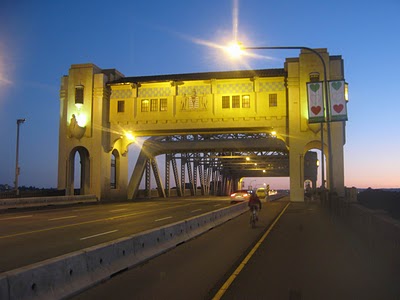 The Burrard Bridge installation converted a motor vehicle travel lane into a one-way bike lane, separated from motorized traffic by a Jersey barrier. Even in bike-friendly, green Vancouver this was a challenge to implement, which becomes clear when you look at the city’s geography. Densely developed downtown Vancouver is separated from most of the city by False Creek, which is crossed by only three bridges. Removing a traffic lane from one of these congested bridges was not undertaken lightly. Before this work was done, bicycle traffic out of downtown had to share the sidewalk with a lot of pedestrians, creating serious conflicts. I understand that this trial installation has been so successful that the city is looking to implement it in the opposite direction as well.
The Burrard Bridge installation converted a motor vehicle travel lane into a one-way bike lane, separated from motorized traffic by a Jersey barrier. Even in bike-friendly, green Vancouver this was a challenge to implement, which becomes clear when you look at the city’s geography. Densely developed downtown Vancouver is separated from most of the city by False Creek, which is crossed by only three bridges. Removing a traffic lane from one of these congested bridges was not undertaken lightly. Before this work was done, bicycle traffic out of downtown had to share the sidewalk with a lot of pedestrians, creating serious conflicts. I understand that this trial installation has been so successful that the city is looking to implement it in the opposite direction as well.
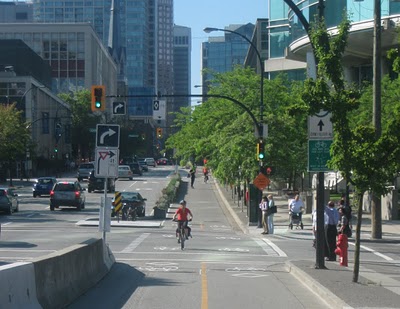 The city’s next separated bike lane project was on Dunsmuir Street. This project offers a number of lessons Newark can use in putting in a similar facility on Delaware Avenue. Putting in a two-way bicycle facility along a one-way street poses a challenge: it requires all travelers to look both ways where they were used to looking only one way. Crossings of cross streets, driveways, and sidewalks need to be carefully considered to reduce the potential for conflicts. In Vancouver these conflict areas were well signed and marked, and the bike route was signalized in the direction opposing traffic. Because Dunsmuir Street is in a well-developed downtown grid, some motor vehicles turns across the bike route were restricted, an option that likely isn’t available in Newark.
The city’s next separated bike lane project was on Dunsmuir Street. This project offers a number of lessons Newark can use in putting in a similar facility on Delaware Avenue. Putting in a two-way bicycle facility along a one-way street poses a challenge: it requires all travelers to look both ways where they were used to looking only one way. Crossings of cross streets, driveways, and sidewalks need to be carefully considered to reduce the potential for conflicts. In Vancouver these conflict areas were well signed and marked, and the bike route was signalized in the direction opposing traffic. Because Dunsmuir Street is in a well-developed downtown grid, some motor vehicles turns across the bike route were restricted, an option that likely isn’t available in Newark.
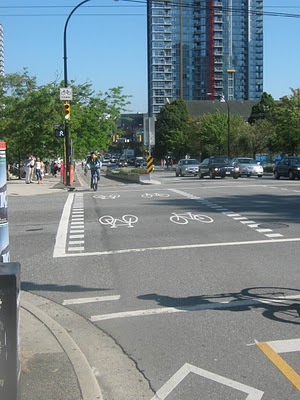 Delaware Avenue also offers some benefits that Vancouver doesn’t have. Newark’s block lengths are longer, resulting in fewer crossing points for all modes of travel. Perhaps most importantly, this type of separated bicycle facility can be built on Delaware Avenue without removing a travel lane or moving curbs. Apparently Delaware Avenue is 33 feet wide, which could be reworked as two 10.5-foot lanes, a two-foot raised separation, and a ten-foot two-way bike route.
Delaware Avenue also offers some benefits that Vancouver doesn’t have. Newark’s block lengths are longer, resulting in fewer crossing points for all modes of travel. Perhaps most importantly, this type of separated bicycle facility can be built on Delaware Avenue without removing a travel lane or moving curbs. Apparently Delaware Avenue is 33 feet wide, which could be reworked as two 10.5-foot lanes, a two-foot raised separation, and a ten-foot two-way bike route.
 Dunsmuir Street has been so successful that the city is looking at more opportunities to create a network of separated bike lanes throughout downtown. The public workshop for the next project, Hornby Street, was held while I was there, so I stopped by to see how a city government that’s world-renowned for public involvement operates. I could have been at home – it was just like a DelDOT open-house style public workshop. It’s always good to confirm that our state is doing things so well!
Dunsmuir Street has been so successful that the city is looking at more opportunities to create a network of separated bike lanes throughout downtown. The public workshop for the next project, Hornby Street, was held while I was there, so I stopped by to see how a city government that’s world-renowned for public involvement operates. I could have been at home – it was just like a DelDOT open-house style public workshop. It’s always good to confirm that our state is doing things so well!
Of course there will be challenges in implementing a new type of bicycle treatment in Newark. But Vancouver has shown us that it can be done.


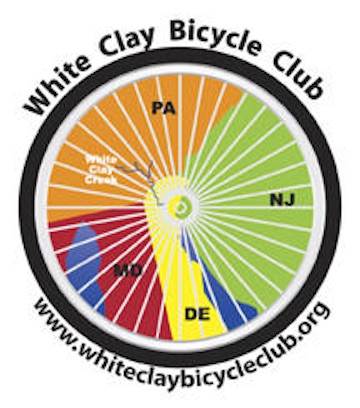



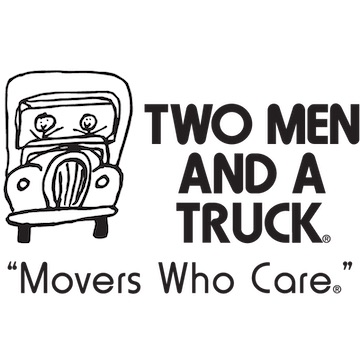


3 Responses
This looks like an excellent choice for Delaware Avenue. That plus sharrows on Main St and we'll see increased mode share, a further element of calming, and greatly enhanced bike/ped safety throughout.
Bike Delaware is standing by to assist the city with this, if called upon.
Uh Oh! Here is where I must disagree. I think that two way bike lanes on one-way streets can be very dangerous in all but the most well thought out situations. With these types of facilities, turning traffic must focus most if not all of their attention on the motor vehicle traffic coming down the one-way street. Drivers pulling out often have little time to look for bicyclists coming down the road from the opposite direction. This video from Dunsmuir Street demonstrates this hazard almost too perfectly.
http://www.youtube.com/watch?v=RB2WLI7N3l8
I don't have an issue with protected bike lanes or with retrograde lanes. I just think if you’re going to have two-way bicycle traffic on a one-way street, the retrograde bicycle traffic should be on the left side of the road where there is some expectation for the presence of oncoming traffic.
Generally agreed, but this is that one out of every hundred or so where it truly is a good fit. The stretch of road in question (Delaware Ave) has few driveways on the side it would go on, and crosses through University of Delaware's main green. It's a mob scene of bikes and peds during peak times, with plenty of bike salmon already. It's immediately obvious this facility will go a long way in formalizing all modes (cars are pretty much relegated already) and increase safety all around.
The video makes a point, it's a similar challenge faced when riding a MUP/sidepath upstream. I use one on my daily commute, it's something you have to be extra vigilant, but you eventually adapt. It's still better than the alternative, riding in the adjacent high speed lane with no shoulder. And minus a road diet (can't, VMT way too high), they can't put shoulders in due to property constraints. So again, one of those rare instances where an inherently flawed design is preferable to none at all.
Andy, thanks so much. If you would like to email, I can be reached at: frank@bikede.org